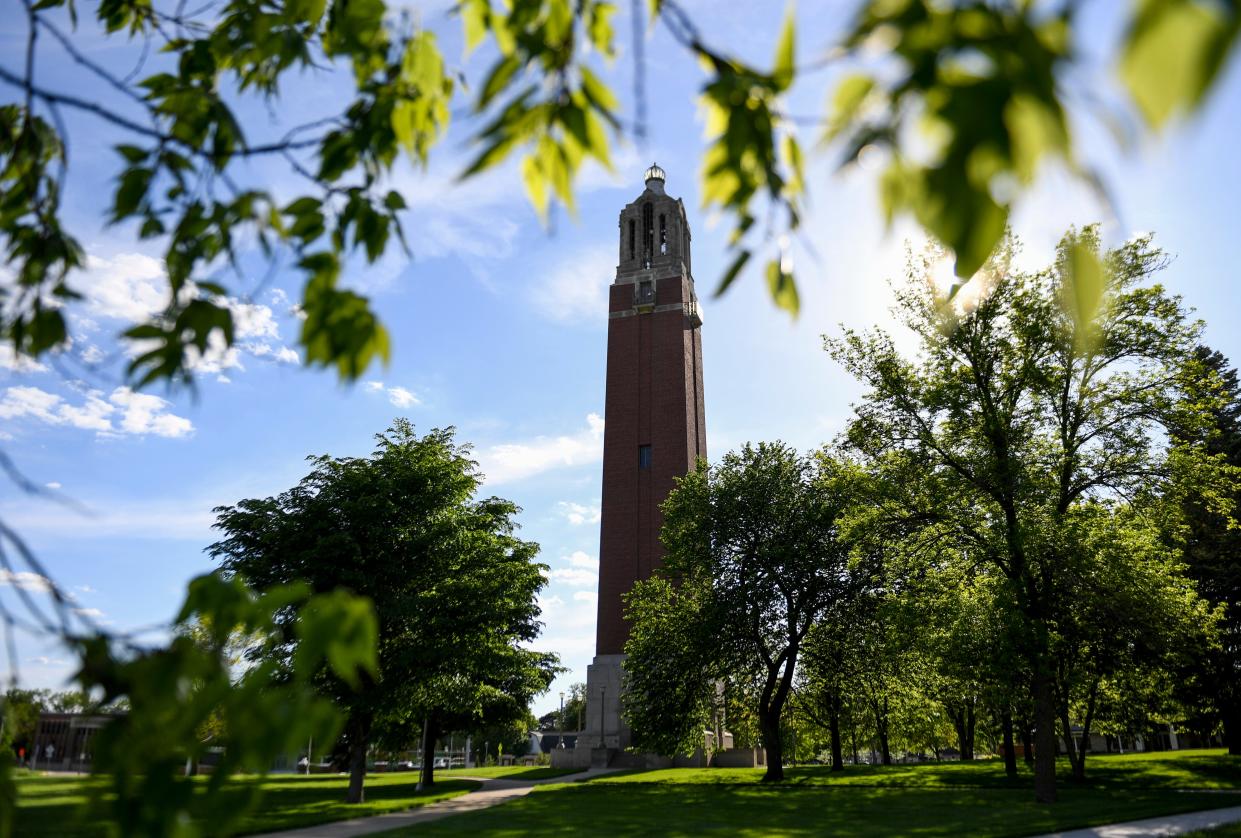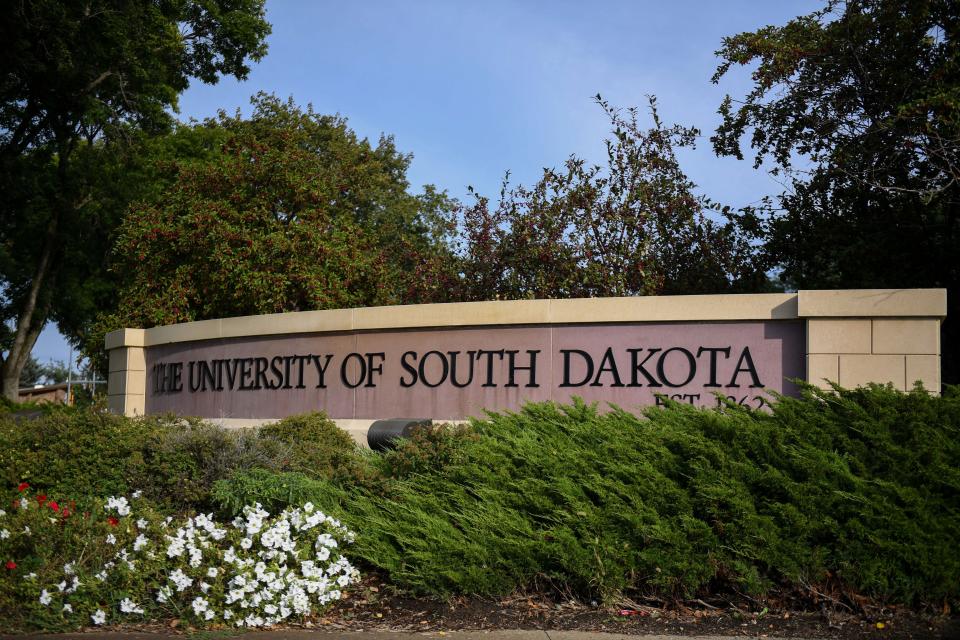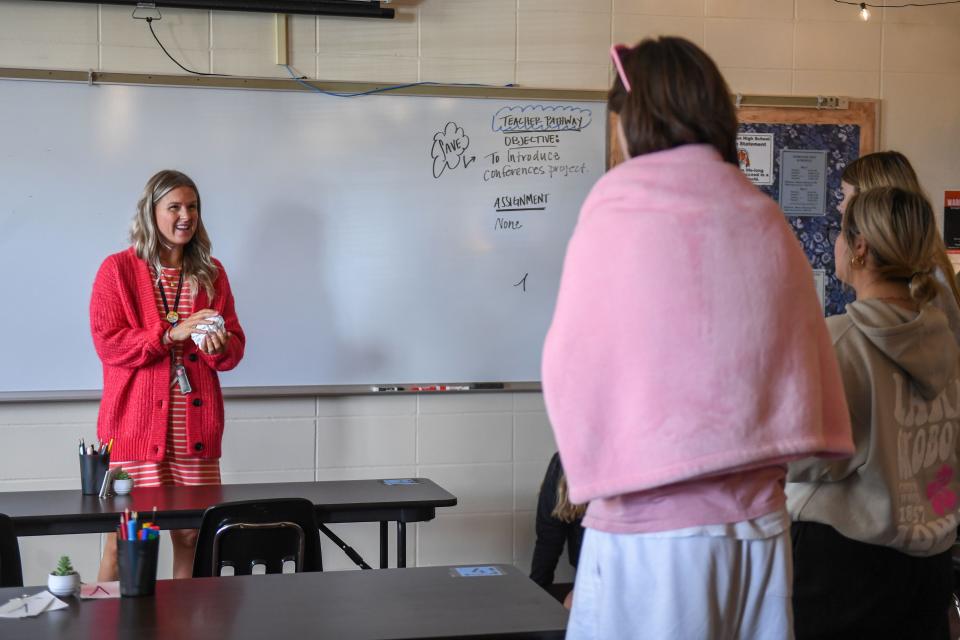Admitted without an application: Pilot project aims to bolster state university enrollment

The number of students graduating from South Dakota high schools is declining. And fewer of those graduates are enrolling in any higher education, let alone attending one of South Dakota’s public universities.
Before an anticipated demographic shift makes the problem even worse, state officials are starting a pilot project to proactively admit high schoolers into college.
Universities across the country are expecting an enrollment decline called the “2025 cliff,” largely attributed to a lower birth rate during the Great Recession of 2007-2009.
After that, there’ll be a 10% decline in high school graduates from 2025 to 2037, South Dakota Board of Regents Executive Director Nathan Lukkes told lawmakers earlier this year. Enrollment at the state’s universities is already down from a high of 36,662 in 2017 to 34,372 this year.

Direct admissions pilot project
Starting in fall 2024, some South Dakota public universities plan to proactively admit high school juniors to select programs based on the students’ transcript.
Participating universities:
Black Hills State University
Northern State University
South Dakota State University
University of South Dakota
Participating school districts:
Sioux Falls School District
Aberdeen School District
Spearfish School District
That won’t just have an impact on universities’ bottom lines. It’ll also impact the South Dakota workforce: fewer children, graduates and workers.
Exacerbating the problem is the drop in South Dakota high school graduates seeking higher education.
That number has steadily declined in recent years – from 67% enrollment in any postsecondary institution (including technical colleges) in 2018 to 63% in 2021, according to the most recent data available. The percentage of South Dakota high school graduates enrolled in an in-state public university dropped by four percentage points in that same timeframe.

There is growth in South Dakota child populations in some areas of the state, such as Sioux Falls and Rapid City. But the challenge, Lukkes told lawmakers, is that the growth is largely in diverse, low-income families without histories of college enrollment.
Some of those families might not be encouraging or suggesting their children attend higher education. They might not even consider it a possibility.
So, Lukkes said, the Board of Regents is fostering that conversation.
The state entity is partnering with three school districts to proactively admit high school juniors to some state universities based on the students’ grades and curriculum.
“The hope is to get people who maybe didn’t see higher education as a viable pathway to realize that they do have what it takes to be successful in higher education and to fuel our workforce in the state,” Lukkes said.
The Board of Regents plans to inform some high school juniors this fall in Aberdeen, Sioux Falls and Spearfish that they’ve been proactively admitted into one or more universities or colleges. Specific admission criteria haven’t been established yet, said Janice Minder, the regents’ system vice president for academic policy and planning.
The participating state universities are Black Hills State, Northern State, South Dakota State and the University of South Dakota. Dakota State and South Dakota Mines won’t participate, both to collect comparative data and because the schools’ programs are more specialized than other institutions.
“It’s not going to move the needle at those institutions to the extent it might for USD-Sioux Falls, Black Hills or Northern,” Lukkes said.
The program is modeled after Idaho’s direct admissions system, which has seen early success. Direct admissions increased first-time enrollments by 4-8% and in-state enrollments by 8-15%, according to a study published in the Research in Higher Education journal. However, the same study found the program had minimal to no impact on the enrollment of Pell Grant-eligible students, a federal need-based grant to low-income students.
Depending on the success of the pilot program, Lukkes hopes to roll the program out across the state.
Minder said the direct admissions notification alone won’t improve enrollment rates. School districts and universities will have to focus more on services helping students adjust to higher education.
“Communication paired with wraparound services, such as guidance on navigating the admission process, filling out the financial aid application, and exploring scholarship opportunities, is vital for students as they imagine their future in higher education,” Minder said in an emailed statement.
The direct admission program fits into a “critical part” of the Board of Regent’s mission, Lukkes said, which is providing access to higher education pathways if students desire.
“We’re not Harvard. We’re not an elite institution,” Lukkes said. “We try to create opportunities for all students and we want to make sure that they have viable pathways to be successful if they choose to pursue their education beyond high school.”
This article originally appeared on Sioux Falls Argus Leader: Pilot project aims to bolster South Dakota university enrollment

